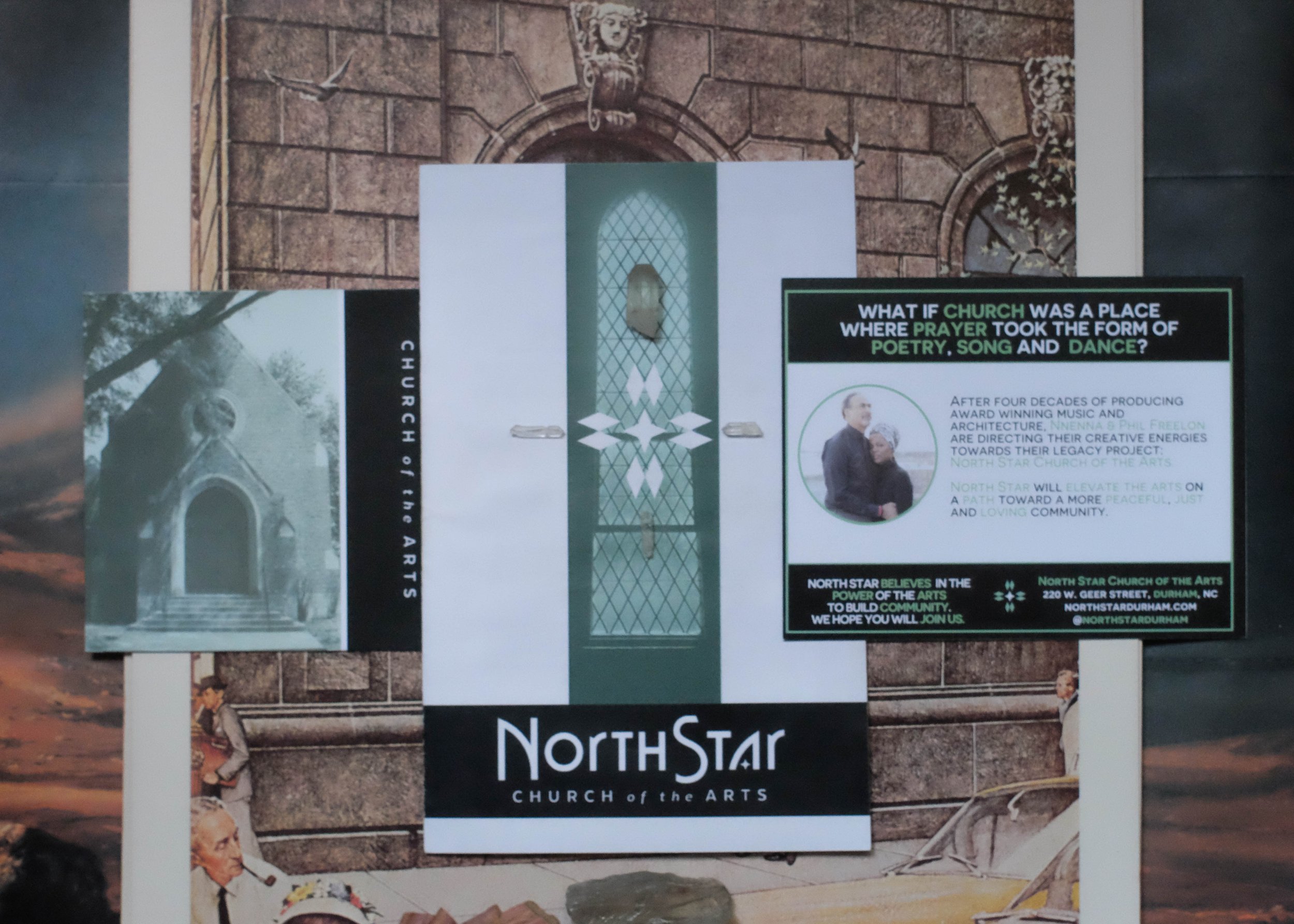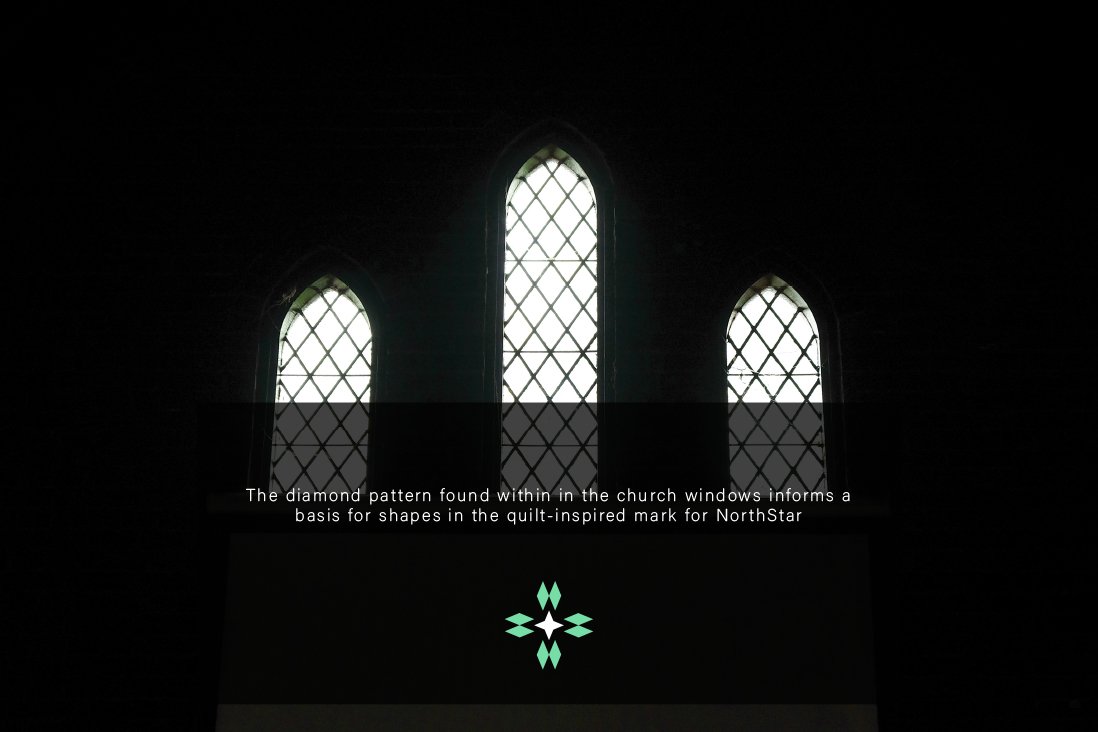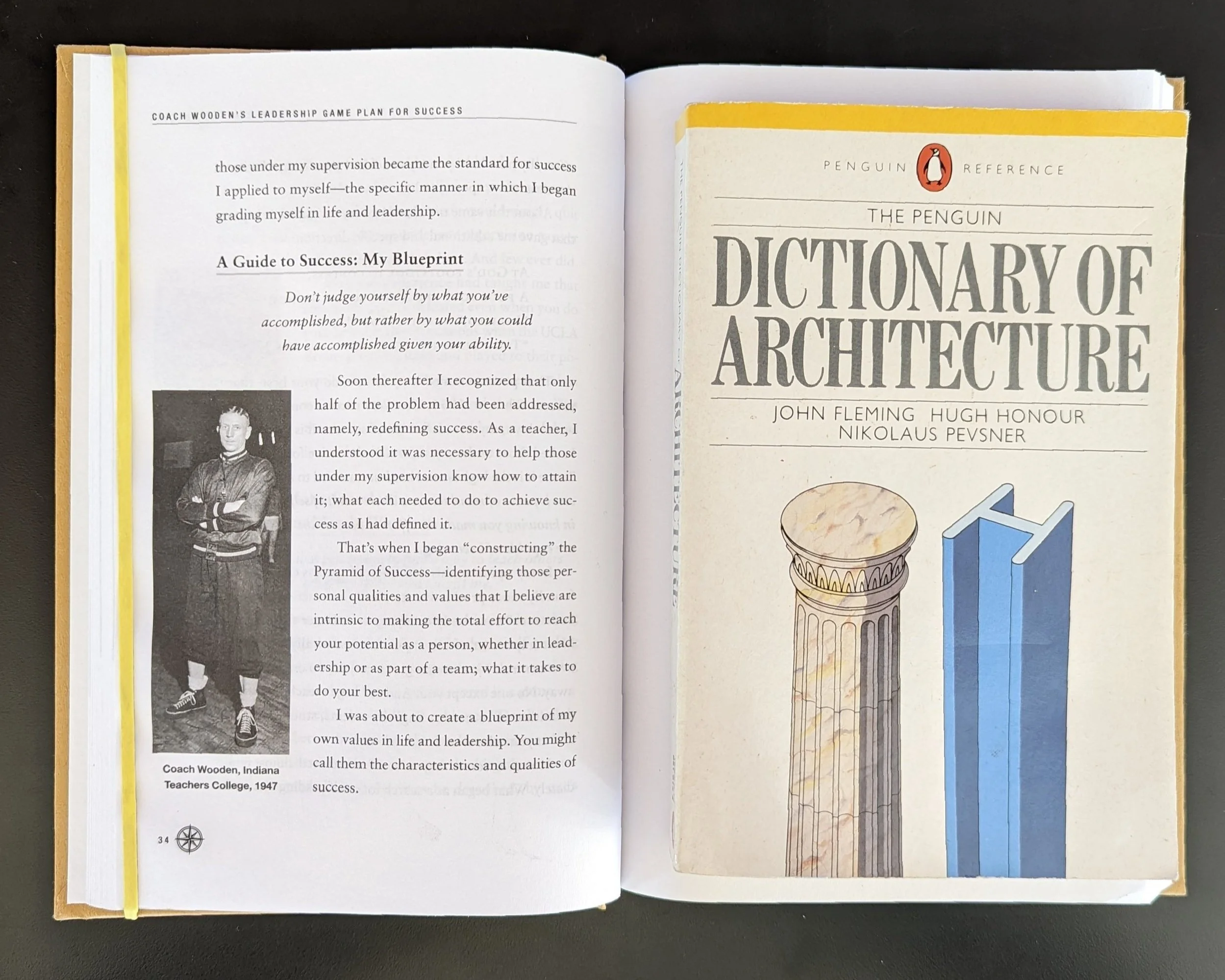8 Impactful Books for My Design Process in ‘22: Round 1
The main stack of books that I’ve been reading and referencing throughout 2022
Building on all that inspires my creative spark with stories of personal growth and achievement
In many ways the process that goes into creating a compelling design or work of art is a lot like writing a research paper. If a picture is worth a thousand words, then a logo that skillfully conveys a brand’s identity or an album cover that captures the themes presented within the music must be worth a million. There’s often so much more involved in the formation of visual work that many times will go unseen.
The research phase is one of my favorite parts of my creative process, which I consider to be the cornerstone for laying a solid foundation of an effective design. I feel that it’s essential to be knowledgeable about a wide variety of subjects that spans well beyond style and aesthetics in order to achieve this. Out of the collection of books that I’ve been referencing in the past year, I’ll be focusing on eight books that have had a significant impact on my outlook on life and design process. Here’s Round 1 with the the first four books featured on the list:
Frank Lloyd Wright on Architecture, Nature, and the Human Spirit, edited by Bruce Brooks Pfeiffer
The most exact translation of the word ‘architect’ is to be a master of know-how. As Frank Lloyd Wright had put it, “the architect must be the master in the interior sense, not only of his tools, not only of his materials, but also of the human spirit. The soul of humanity is in his charge, really.” His interests went well beyond architecture to embrace the realms of ethics, existence, and all aspects of human behavior with deep concern. I first became aware of Frank Lloyd Wright’s work from a documentary that had aired on PBS about his infamous Falling Water house when I was about 4 years old. My father had recorded on VHS from the TV broadcast, and over the years I would watch it in awe at how Wright would not only design such beautiful and innovative spaces, but the way he would incorporate and maintain a perfectly balanced relationship with nature. With the majority of my work I always try to incorporate the considerations to nature that Wright would employ in his designs. This book compiles a great collection of quotations and commentary from the master architect on a variety of subjects throughout his lifetime and has served to be a nice source of thought stimulation for a number of projects I’ve had going on over the past couple of years. A number of which I’ve had the great honor of working on with a couple of architects who are highly revered in their own right.
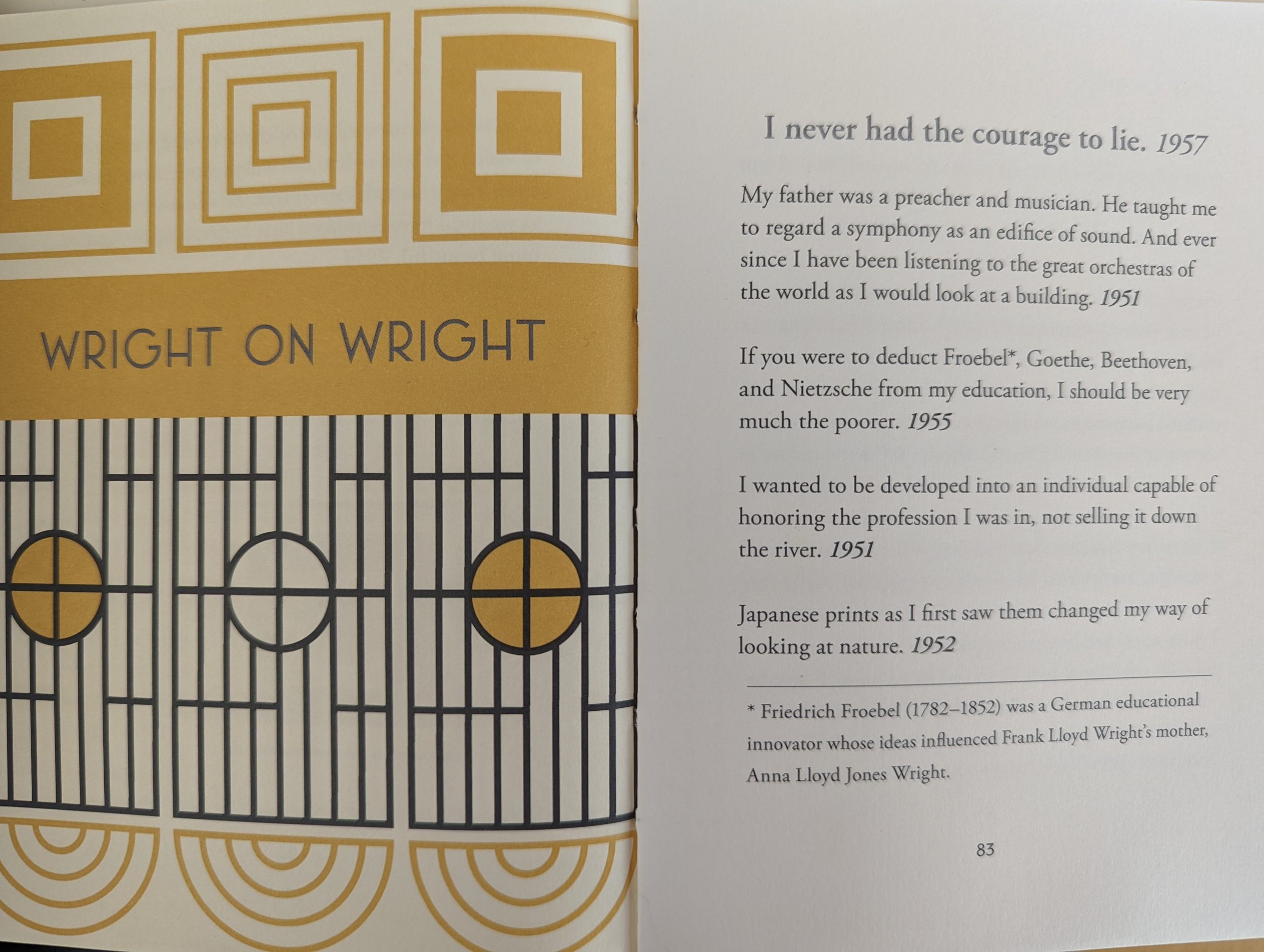
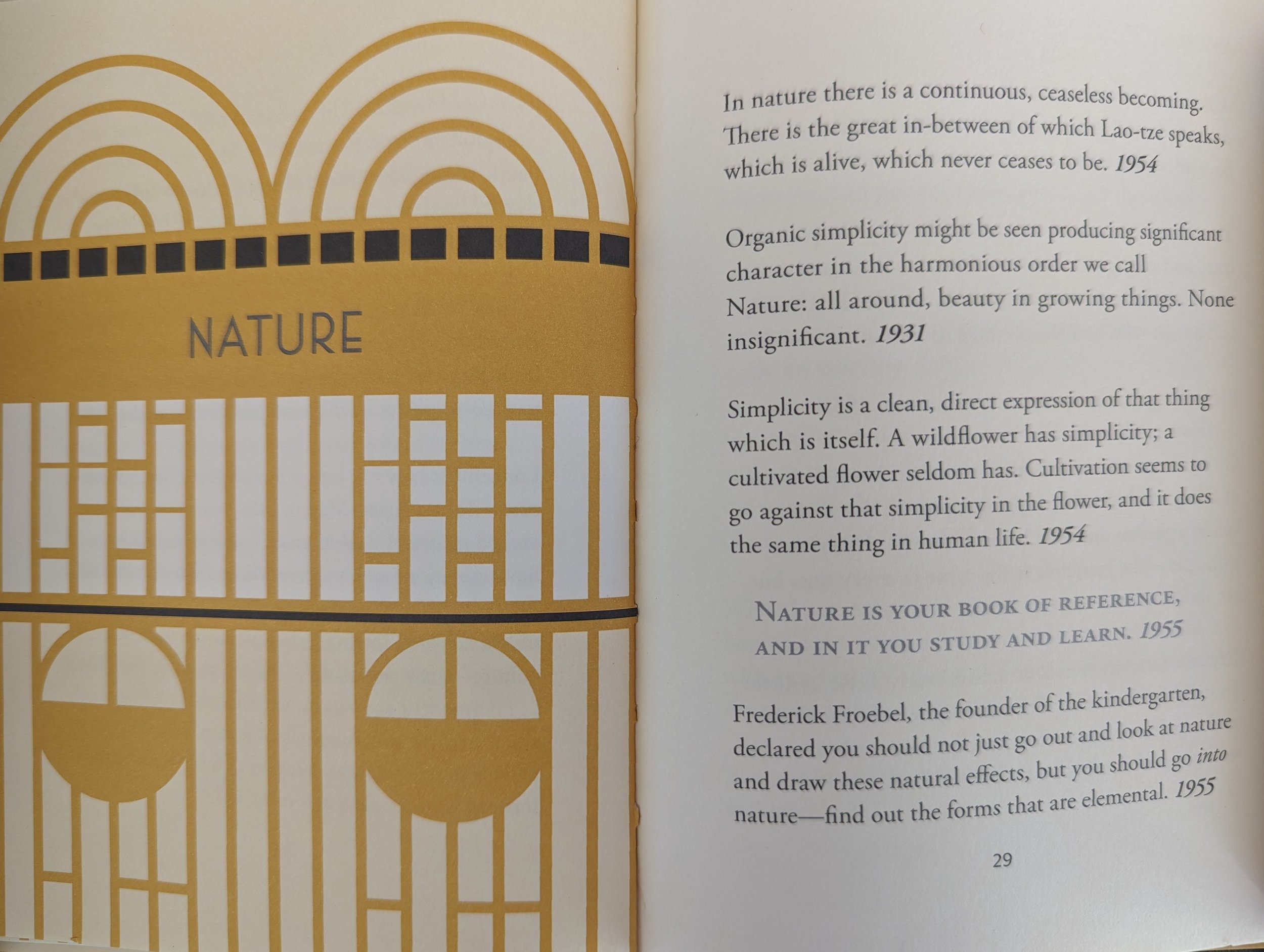
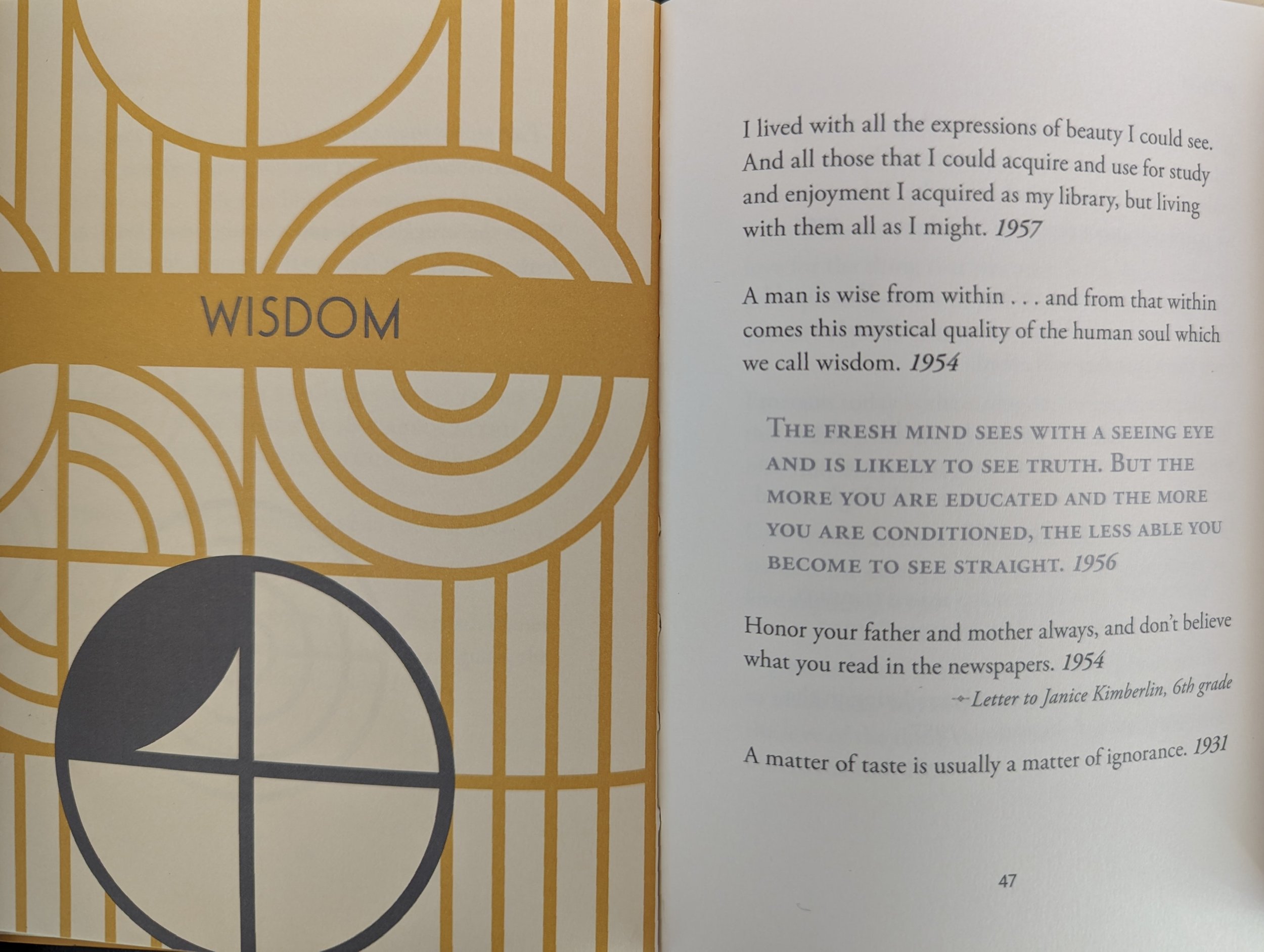
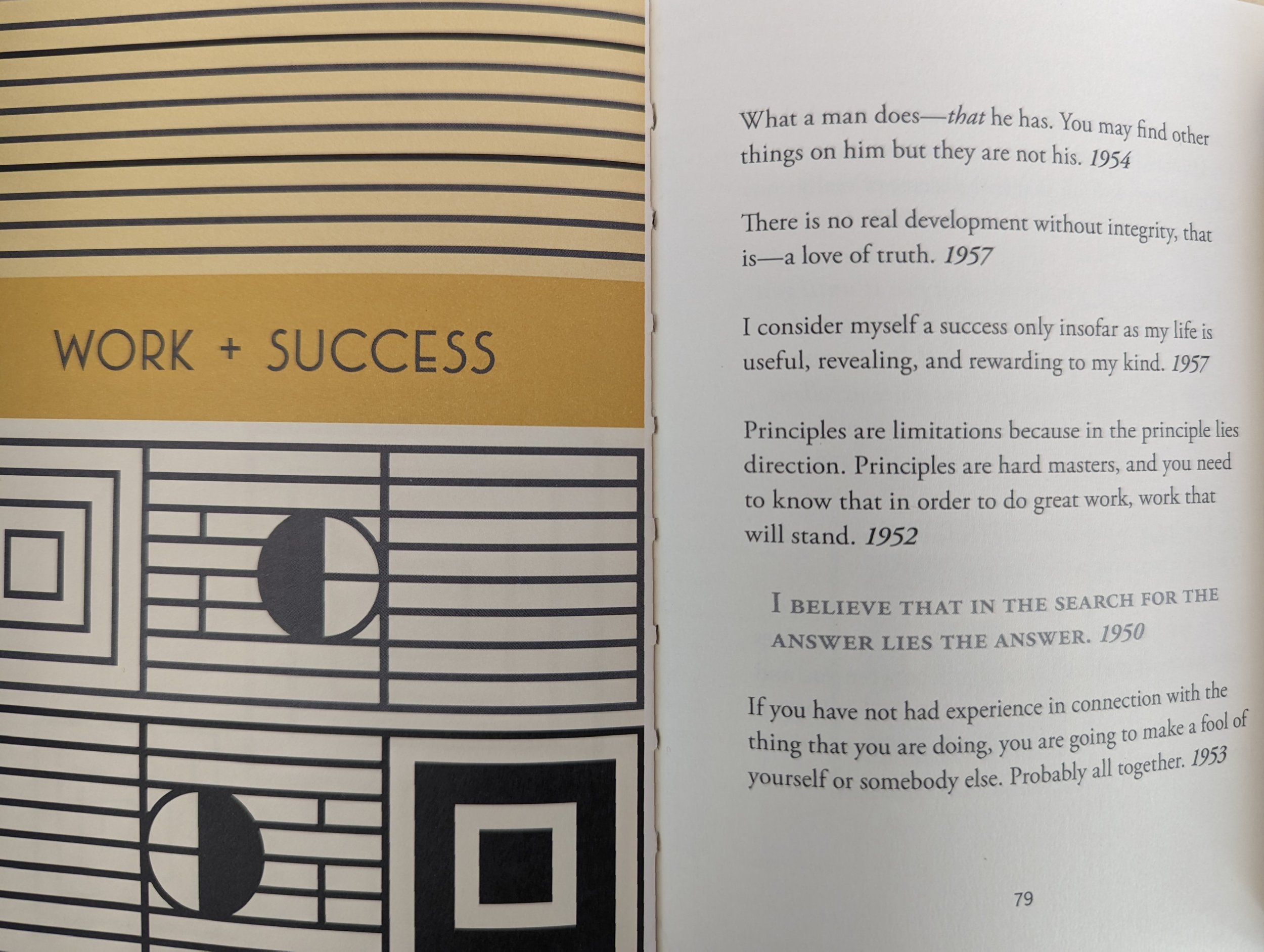
“Nature is your book of reference, and in it you study and learn. ”
My partner-in-time, Liz, had this book in her collection, and we found ourselves connecting on his works and the subject of architecture in many of our early conversations. I happened to be working on the artwork for Nnenna Freelon’s Great Grief podcast at the time, which explores her experience with grief after her husband Phil Freelon had passed away in 2019. Phil was described by many as “America’s most prominent Black architect”, and left a legacy much like Frank Lloyd Wright in the buildings he designed, along with his deep love and respect for the natural world that surrounds us. Before his passing, I was fortunate to work alongside both Nnenna, Phil & their youngest son, Pierce, in designing the identity for their community center North Star Church of the Arts. I remember him sharing a story with me about one of the things that inspired him to be an architect. His grandfather (a Harlem Renaissance painter named Allan Randall Freelon) had taken him on a walk through the woods and asked him to sit by him on a tree and close his eyes to listen to the sounds of nature all around them. The brief moments that I had with him discussing different considerations for their brand’s identity incorporating details of the church’s architecture into the design, as well as relating in ways to each others approach to art and design in order to connect with a deeper story, are some of the most impactful memories that I will carry with me throughout my life and career.
Sacred Hoops: Spiritual Lessons of a Hardwood Warrior, by Phil Jackson & Hugh Delehanty
In many of the same ways that the study of architecture has influenced my approach to design and life, the game of basketball has also served as an impactful tool for my own personal development, as well as how I approach different projects I’m working on. Much like in architecture, the game of basketball is all about spacial awareness. Not only in the sense of a court’s defined boundaries as a type of architectural frame, but also in regards to creating space based on what the defense is presenting to you. This can also be likened to evaluating the terrain and elements from which the form of a structure may be expressed. The game also beautifully harmonizes a balance between blending individual creativity with teamwork, as players adjust their roles according to the circumstances of play and space.
In a similar fashion to Phil Jackson, I’ve always had a sense of the ways that the spirit and sport are inherently linked. Often referred to as the “Zen Master of the NBA”, Jackson employed a number of spiritual practices with his teams, combining teachings from Zen Buddhism, Christianity, Tai Chi, and the Lakota Sioux to help his players be more centered and selfless amidst the chaos of the game. Along with his assistant coach, Tex Winter, he also utilized geometric patterns within their innovative Triangle Offense, described as a type of five-man tai chi, in order to create spacial organization while allowing their players to flow freely as a unit in order to lure the defense off balance and create a myriad of possibilities that open up on the floor. As a leader and architect of two multi-championship winning dynasties with the Chicago Bulls, as well as the Los Angeles Lakers, Jackson was able to achieve this level of greatness by getting dynamic members of his teams, who may have had a tendency of being more driven toward individual glory, to be more selfless. He encouraged them to wholeheartedly give themselves over to the group effort for the success of the organization. I’ll often look to these stories of triumph in sports like championship winning teams and great athletes for inspiration because of how their focus and determination translates into striving for success in the business world.
“I find that when I can be truly present with impartial, open awareness, I get a much better feel for the players’ concerns than when I try to impose my own agenda. And, paradoxically, when I back off and just listen, I get much better results on the court.”
Architects of the Game: Study Guides. Sacred Hoops x The Natural House
Architects of the Game: Measuring Up the Mighty Nobel Masters (2018)
“Minor details, like pennies, add up. A good banker isn’t careless with pennies; a good leader isn’t careless with details.”
Coach Wooden’s Leadership Game Plan for Success, by John Wooden & Steve Jamison
When asked how he was able to win all those championships, Coach John Wooden would respond by saying, “I didn’t win a single championship. Our team did. I like to believe that my teaching helped them accomplish that. The quality of my teaching and leadership and the effort I put into it is where I found my defining and ultimate success.” Coach Wooden’s teaching was so effective because of how meticulous he was about the details and getting his players to have a such a deep understanding of how important the little things can be in pursuit of larger goals. He’d say that, “in fact, there are no ‘big’ things, only an accumulation of little things done well.” He’d even go as far as giving a careful demonstration on how to eliminate wrinkles and folds when putting on sweat socks on the first day of practice because of how things like this could cause blistering in the feet and ultimately effect a player’s performance. He didn’t want to leave anything to chance. That attention to detail was in everything he did, from the way he planned and ran practice with every single minute accounted for, to details around travel, equipment and food. There was a correct way for everything, and he wanted everyone to know how.
In spite of his insistence on the smallest of details and all the success that it brought his teams, he remained open to change as he always wanted to keep learning and improving as a coach and as a leader. He treated everyone with dignity and respect, showing that an effective leader must also be a good listener. In my line of work as a designer, I feel it is important for me to approach each project with this same attention to detail and consideration. Part of that process starts with a Discovery & Strategy phase where we’ll get to know a client’s ideal customer along with understanding their brand story and business goals. Covering these details in depth before we start the process designing comps is an essential step in laying a foundation for how your brand will be conveyed and have a strong and lasting presence in the marketplace. As Coach Wooden would say, “If you don’t have time to do it right, when will you have time to do it over?”
Jack Dempsey: The Manassa Mauler, by Randy Roberts
I picked this book up while working on the cover art for Tab-One’s album Glory in the Weight that he put out in the middle of ‘22. Right off the bat, the album title got me thinking about the weight one endures in the chase for a championship, and upon listening to the first cuts off the album, the song Heavy evoked images of boxer training for a heavyweight title bout. Jack Dempsey’s early life as a fighter was that of legends. By age eleven he began bathing his face and hands in beef brine in order to give them a leathery texture, and he’d pine resin to help strengthen his jaw each day. Before becoming a prizefighter he lived the life of a hobo traveling to different mining camps throughout the Rocky Mountains by hitching a ride hanging onto the two-inch wide steel rods on the underside of train cars, holding his body up mere inches from the tracks below while enduring the elements of hot summers and freezing winters.
Throughout the 1920s, Dempsey had ruled the public imagination of what a fighter should be like; a hungry kid who fought all-out, all the time. His influence would go on to inspire other great boxers of our day like “Iron” Mike Tyson who modeled much of his fighting style after Dempsey’s. For Tab’s single release of Heavy, I included this image of Dempsey as a central figure for the artwork to act as a giant monument emerging from the sand dunes. A crew of builders are stationed on his shoulders as they work to reinforce his neck and back with steel beams, allowing him to carry the weight of a heavy world. The background is made up of banded iron formations to represent the raw materials from which the steel is made, while pterodactyls soar through the sky to capture the imagination of how thees things transcend time (and also paying homage to Tab’s son’s fascination with dinosaurs). Dempsey is also represented here in the foreground, running alongside his trainer, showing there’s a path forward as the soon-to-be-champ keeps building towards dreams of achieving greater things while rising above moments of hardship.
“I’m fighting for glory. I’m fighting because I want to fight. It’s my business. I’m not dead by a jugful.”
Stay tuned for Round 2 which will pick up with the next four books. Sign up for the newsletter below to get first word on when the next post is released.




